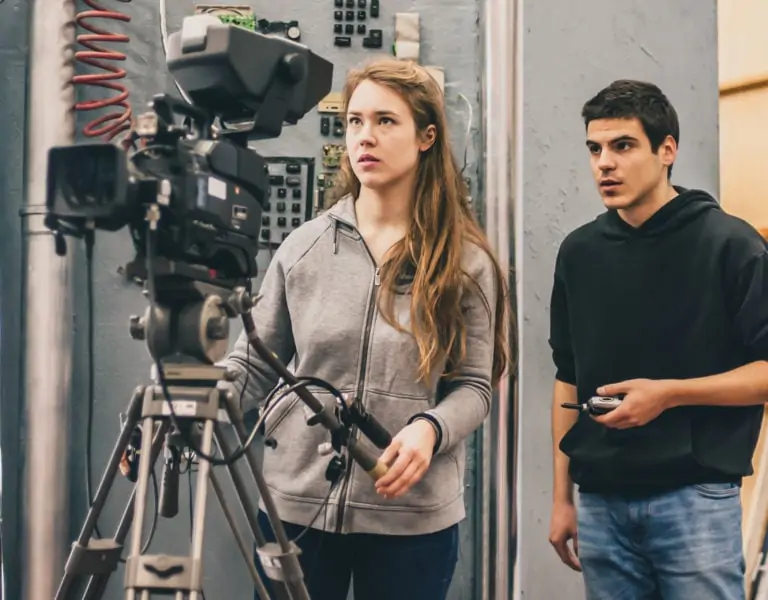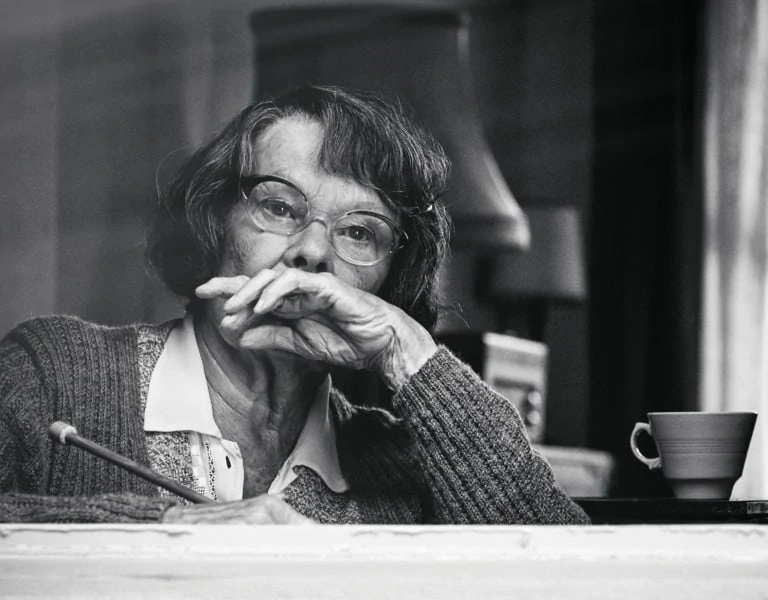The past few years have been memorable, mostly for the wrong reasons. However, since the world started getting back to normal again, there has been a wide selection of exciting new films being produced, at different ends of the budget scale.
Some films, like The Gray Man, have been reported as having massive budgets of over $200 million to spend, a colossal amount of money to recoup. Opening with “mixed reviews” it has yet to be the summer blockbuster the producers wanted as a certainty but will ultimately make money.
Some other films are at the lower budget end, yet they have a story that can compel and excite the audience, and that is often what this business does well. A story that brings out an emotion in the audience, whether they are laughing, crying, in shock, or simply watching the screen in awe at the visual treats they are seeing.
Here are a few GBCT members who are currently working on different productions.

MADNESS, MAGIC AND MERFOLK
The Herring Girls, a short film written and directed by Rekha Garton, was shot in Norfolk earlier this year. Set in the 18th century, with dialogue mainly in Gaelic, it tells the tale of Annag, a young girl abandoned to grow up travelling with the herring girls, a group of women who travelled with the fishermen along the east coast from Aberdeen to Norfolk, gutting, salting, and packing the catches. When we meet Annag, she is on the brink of a spiritual and supernatural awakening.
“When I read the script, I fell in love with it and thankfully Rekha and I were very much on the same page creatively,” says Ruth Woodside GBCT, the cinematographer for the short. “We wanted to visually develop an inhospitable environment, invoking feelings of being lost, alone and frightened.
“Using aspect ratio 3.55:1, framing, and the unique properties of Kowa x2 anamorphic lenses, we created Annag’s world. As we had underwater scenes and were shooting available light exteriors on the unpredictable Norfolk coast, I chose the RED Helium to give me the latitude I needed. The shoot was a challenging six days, but it was a lot of fun, we had a fantastic cast and great local crew.”
Ruth has been working in the camera department for 20 years and stepped up to camera operator last year on the Apple TV+ series Wool with ScreenSkills’ Make a Move scheme. The Herring Girls, her sixth short film as cinematographer, is currently in post-production.
ROCKING ALL OVER THE WORLD
John Stanier BSC GBCT is currently in prep for a period film about rock ’n’ roll. The film, written and directed by Jody Bar-Lev, was due to be shot in Latvia and Poland, but the principal locations have changed and now the whole feature film will be shot in Los Angeles and Ireland.
Music on the Bones is set in the Russia of the late ‘50s and ‘60s when rock ’n’ roll was regarded by the authorities as decadent and anti-socialist. Its story encompasses the lives of a group of Russian students who get together to make recordings of ‘Western’ music in a most innovating way – but in due course have to pay the price for their love of new music.
And for aspiring camera technicians looking to work in the business, here is a way to get noted for having a specialist skill to help you stand out, such as Steadicam operator.
–

STEADICAM SUPREMO
Get to know camera and Steadicam operator Christopher TJ McGuire SOC ACO GBCT
How did you get into this business?
I was working as a bartender in the local pub when the manager of Autocue North helped me make contacts. This led me to work with Mike Turnbull, who gave me the chance to become a camera assistant with his company, Walker Turnbull TV. I worked with some great camera operators in the North West, around the country, and the world, on programmes like World in Action, Cutting Edge and Panorama. I remember how nervous I was actually shooting my first ENG news item for Granada Reports, the local news programme for Manchester. I shot it on the Sony 507SP and the report was about the cricketeer Brian Lara signing up with the clothing label Joe Bloggs to wear their clothes! After that, I worked on documentaries, music, travel, and cookery programmes – pretty much most types of broadcast shows, alongside many corporate jobs for lots of blue-chip clients.
What made you decide that Steadicam was for you?
Apart from being dazzled by the craft of moviemaking, I knew I wanted to be a part of the art form and decided to get my foot in the door by any means necessary. One of my favourite films was Rocky, and as I gained more insight into the business, I discovered the rig that Garrett Brown had pioneered in Bound for Glory and then had introduced Sylvester Stallone to for scenes in Rocky.
It was Rocky that fed my passion to understand and master the art of Steadicam. I bought the Tiffen SK2 first and taught myself to use it. Thankfully, I already had a client base that included documentary and music magazine shows – I gently introduced the Steadicam to those clients so I could hone my skills in a more pressured environment.
My first Steadicam commercial was for Benecol spread. I quickly realised I was going to need to make some changes to the SK2 to enable me to actually fly the Aaton XTR Prod. So, I had to get a two-stage post and a Marell monitor – Robin Thwaites over at Optex helped me get the post converted. But I realised I was going to have to upgrade the whole system if I was to invest in myself and brand myself as a fully-fledged Steadicam operator. This is when I realised finance (credit) was going to be a big part of being taken seriously!
What rigs do you use and why?
I have finally built a rig that I am more than happy with. It includes the Walter Klassen Flex vest, Pro Titan Arm, and the MK-V Infinity Sled system with a Betz Top-Stage and the Tiffen Volt. I also recently bought a NB Stabiliser Arm which is amazing – lightweight and lively! Perfect for the way I work around the sled.
I like the rig to be as simple as possible, which enables me to easily compose and maintain the shot without thinking about where I am in conjunction to the equipment. I also own several remote heads including the Mo-Sys L40, DJI Ronin 2 and the ARRI 360 Head.
We must still protect ourselves and others from COVID, so the remote systems have come into their own even more. We can put the camera in close contact with the actors but not impose in their space. In addition, we are now able to move the camera easily around the set on a dolly or other tracking device and be fully stabilised to allow for more deliberate composition.
You now live in the US and the UK when working here. What does this mean to you?
I actually have dual citizenship and I’m proud to be an ambassador for the UK whilst working in the US. I felt it was important to be a member of the Society of Camera Operators and to be active – I regularly write articles for the SOC magazine about the productions I’ve worked on. I am also an IATSE Local 600 member, recommended by Julio Macat ASC and Mimi Leder.
In the UK, I’m a member of the GBCT and the ACO. It’s really important to me to belong to all these reputable organisations, as is my being British and flying the British flag proudly in the USA!
Getting my Green Card was no easy task though. I’d applied for the Card but as I wasn’t established in the US in those days, I still had to make myself available for work outside the USA. This meant it was the long way round for the application having to be made through the US Government’s London Embassy. This enabled me to leave the US to earn money on different projects without having to commit to staying in America for at least two years. The appointment that confirmed my Green Card acceptance was after a night shoot in Thailand at the US Bangkok Embassy. I was there working on Street Fighter – The Legend of Chun-Li. (Happy Memories working with the wonderful Geoff Boyle NSC FBKS.) Once I became a 600 member, I got to work with Jonathan Taylor ASC GBCT on Iron Man 2 on 2nd unit and Matthew Libatique ASC on main unit for a few sequences with the AR.
Five years after receiving my Green Card, I applied and was granted US citizenship, getting the naturalisation ceremony done before working a night shoot on Godzilla: King of the Monsters in Atlanta. It’s easier to remember where and what I was doing throughout the years via invoicing for projects I’ve specifically worked on in those time periods!
If you could give any advice to someone interested in pursuing a career in this business, what would you say to them?
The most important advice I can give is to be enthusiastic to help and learn, be patient, and be consistent. Crews work with people that carry those traits and your potential is generally looked at with a more socially integrated team.
With regards to Steadicam, my advice is to master shot composition first as a camera operator. I learned so much from shooting documentaries and an assortment of different genres before justifying the investment I was making financially and for that speciality.
I’m proud of my achievements with the rig but am actually proud of myself for mastering the wheels and competently operating and communicating with a team, including the dolly grip, head technician, crane/pickle operator, and focus puller, to name but a few.
What’s next on the horizon for you workwise?
I will be working with Dan Mindel BSC ASC SASC on Red One in Atlanta, starting end of September. I’m very much looking forward to the opportunity to work for and with him.
Thank you for your time, Chris. Or do you prefer TJ – what does TJ stand for?
The TJ stands for Tadeusz Jan – given to me because of my Polish heritage via my mum’s parents – they were immigrants after WWII. My grandfather, Josef, was a Polish Paratrooper that fought in Arnhem and Maria, my nana, had been plucked away from her family and forced to work for the Nazis. They were both very proud and hardworking people that made a life for themselves in the UK.
They pretty much started me off with my love for motion pictures. As a kid I’d watch black and white matinees with them – loved that and love that memory!
I’m probably right in thinking that my first war movie was A Bridge Too Far which was a film that my grandad felt a great affinity with. Maybe it was a little bit of therapy for him.


















